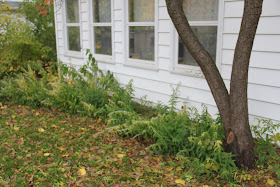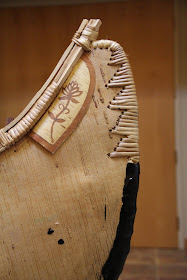It's that time of year when people think a lot about giving or receiving gifts. Every magazine and website seems to put out an annual list of the top ten gifts (toys/tech/games/etc.). I have my own list, but it's a little different. The most fun I see kids have all year is when I turn them loose to
explore a woods or a pond. My list is focused on items to help kids
explore. Without further ado, here is my top twelve list of gifts for kids
for this year (or any year).
I originally came up with this list in 2013, but have added two items and updated prices and links for 2018. This list also works great for adults, but you might want to upgrade the first four items to adult sizes!
Getting Outdoors
Despite all the talk of the disconnect between children and nature, most kids still love to explore the outdoors. They just need to have the tools to make it more enjoyable.
1. Rubber boots - Having cold wet feet is no fun. Nothing can ruin a day in the outdoors faster. Rubber boots also let you explore puddles and the edges of ponds. Knee high boots are best as they let your kid explore deeper puddles. These
boots do not have to be expensive. My advice is to skip the ones with cartoons characters and get the plain black or green ones. Look for a pair at around $15 at Walmart
or your local farm and home center.
2. Wool socks - Pair the rubber boots with the right socks and they are suitable for year round wear in all but the coldest weather. Socks are one item where its best to splurge - buy the best wool socks you can find. I like socks from Darn Tough, SmartWool, and Farm to Feet, but several other brands are just as good.
Expect to pay $10 to $15 - trust me they are worth the extra cost!
3. Waterproof Jacket/Rain Suit - I love being out in the rain.
Everything seems so much different when it rains. Rain softens the
ground and quiets sounds,. Animals often hold tight in the rain. Worms
come up out of the ground. Tiny streams form and cascade. In my mind
there is nothing better than exploring a woods on a rainy day, but I
hate having wet clothes. A pair of rubber boots and a good rain suit
opens up new worlds for exploration. Try
this set for around $30.
Tools for Exploring
So the kids are outside, what are they going to do now? Getting outdoors is more fun when you have the tools to explore!
4. Headlamp - Don't limit your kids' explorations to daytime hours. Nighttime is exciting because it holds mysteries. Most kids love exploring the dark because its just a little scary- you want them to be safe. A good headlamp helps. Try
this one designed for kids. It's about $15, but can often be found cheaper.
5. Aquatic Dip Net - One of my favorite things to do is to
look for aquatic invertebrates.
What kid doesn't want to see what is swimming around in the water? The
tool needed for that is a good net. This is not a place to skimp on
price - that cheap butterfly net from the local big box store will not
last long. I like these
adjustable nets from Acorn Naturalists. At $27.95 this is one of the most expensive things on my list.
6. Insect Net - Sometimes I would rather look toward the sky than
the mud. I have yet to meet a kid that was not interested in catching
butterflies, dragonflies, or other flying insects. You need a large net
with a long handle. Again I like a
net from Acorn Naturalists - another big purchase item at $24.95. A nice thing about these nets is that parts can be replaced if they are ever damaged.
Once the kids have caught something they will need a place to put it so
it can be observed. There is no need to get fancy here. A cleaned out
clear plastic or glass jar (peanut butter, spaghetti sauce, etc.) will
work just fine for any invertebrate (or even frogs, snakes, and
salamanders for a short time). A five gallon bucket is great for
dumping your dip net into. Ice cube trays and wash basins are prefect
for observing aquatic creatures. Sometimes, a closer view is desired.
7. Magnifying Glass - Any magnifying glass will do. They can be found at any drug store, big box store, or even many dollar stores.
Identifying and Recording
The kids are outside and exploring. They have TONS of questions! They want to show you everything!
8.
Guide Books - There are dozens of great guide books on every nature subject.
Peterson First Guides
are great options for kids. The Peterson Guides are such a bargain at
under $8.00 each that you can afford to buy more than one.
9.
Note Book/Sketch Book - Having a place to write or draw pictures of what is found is a favorite of
many kids (and
adults).
A simple wirebound notebook will do, or good blank books can usually be
found in the bargain sections of bookstores for a few dollars. Even a
stack of printer paper and a clipboard will work for this.
10.
Colored Pencils - Splurge on the
Crayolas.
They are really that much better than the other cheap brands and at
under $6.00 for a 50-pack, they might be the best deal on this list.
11.
Pencil Sharpener - A good colored pencil deserves to be sharpened with a good portable sharpener. I purchased several of
this style from Staedtler for students to use. They are worth the $6.29 price tag.
10.
A cheap Digital Camera - This is the only thing on my list
that requires batteries. It will also require some sort of memory card
to store pictures. Good used cameras can often be found on craigslist.
(Right now
Target has this model on sale for under $20!)
A digital camera is a great tool for the budding naturalist it is a
great complement to (not a replacement for) the sketch book. One
advantage of the digital camera is that it reproduces a true to life
image of those things that cannot be identified in the field so they can
be looked up later. There is the additional cost of a memory card, but those can be found for under $10 and often go on sale.
There is my list of twelve things that every kid should have on their
Christmas list. Even if you bought everything on that list, total cost
should still come in at under $200 (before any shipping costs). Leave
off any two of the four most expensive items (camera & memory card,
nets, and rain suit) and cost comes in under $100. Twenty-five dollars (or less) will
buy a field guide, sketch book, colored pencils, and pencil sharpener -
this will make a great start toward a lifetime of studying nature.






































